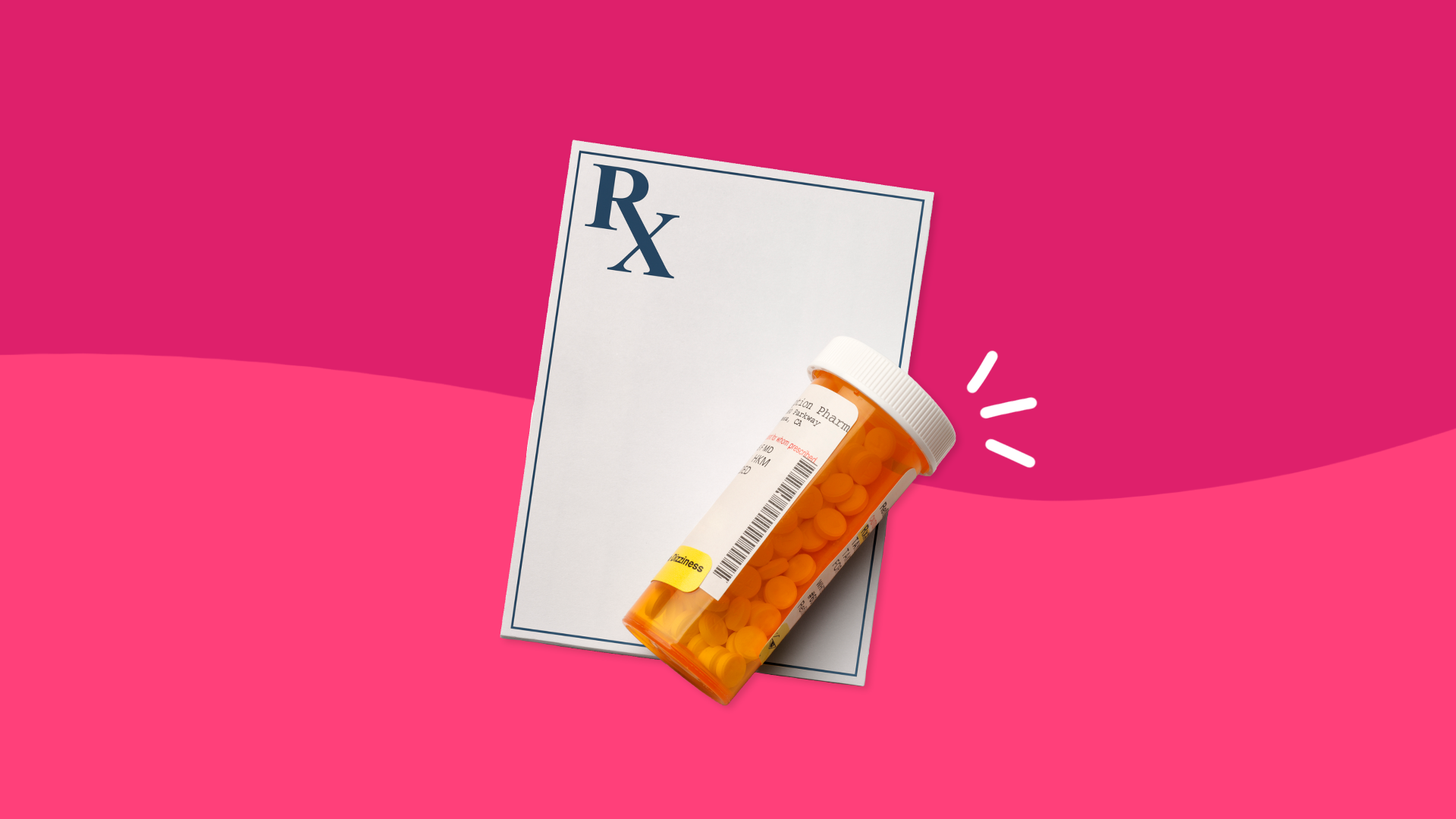Common estradiol side effects | Serious side effects | How long do side effects last? | Warnings | Interactions | How to avoid side effects
Estradiol is the strongest of three forms of estrogen naturally produced by the female body. These also include estrone (E1) and estriol (E3), which are hormones that bind to the body’s estrogen receptors. Both estradiol and estriol can be used as hormone replacement therapy in postmenopausal women, but estradiol is far more commonly used. Estriol is only available in compounded drugs that are not FDA approved.
Estradiol (E2) is a generic prescription medication used as hormone therapy to treat symptoms of menopause such as night sweats, skin flushing, hot flashes, and vaginal dryness, inflammation, and thinning. These effects are caused by decreased estrogen levels in the body and taking estradiol helps increase the hormone and help with symptoms.
Estradiol is also an ingredient in certain low-dose birth control pills that are prescribed to some women during perimenopause. Estradiol may be prescribed to prevent osteoporosis and to treat menopausal migraine and postpartum depression. It is sometimes used in palliative care for certain breast and prostate cancers.
Estradiol is available as a tablet, transdermal patch, cream, or vaginal ring. There are many Estradiol brand names, including Alora, Estrogel, Vagifem, Climara, and Estrace.
When taking any medication, it’s important to weigh the benefits and risks. Consider the following estradiol side effects, warnings, and interactions.
RELATED: Questions to ask your doctor about menopause
Common side effects of estradiol
Most common side effects of estradiol improve within three months. When taking estradiol, the most common side effects include:
- A skin reaction at the site of patch or cream application
- Vaginal spotting or breakthrough bleeding
- Dysmenorrhea, or painful periods
- Breast tenderness or breast pain
- Musculoskeletal pain including back pain
- Stomach cramps, bloating, or indigestion
- Flu-like symptoms
- Nausea or vomiting
- Diarrhea or constipation
- Vaginal discharge or itching
- Headache or migraine
- Fluid retention and bloating
- Increased blood pressure
- Trouble sleeping
- Changes in mood
- Vaginal yeast infection
- Increased blood sugar
- Weight changes
- Changes to sex drive
- Changes in hair growth, including hair loss on the scalp and excess hair growth on the face, chest, or back
- Vision changes or problems with contact lenses
- Skin rash
- Melasma (chloasma), brown patches on the face
- Nipple discharge
- Expulsion of the vaginal ring
- Breast development may occur in pediatric patients using the cream version
Serious side effects of estradiol
Though serious side effects are not common when taking estradiol, the following may occur:
- Blood clots in the legs or in the lungs
- Blood clot in the retina of the eye
- Chest pain and heart attack
- Stroke
- High blood pressure
- Increased risk of cancer in the breast, ovary, and uterus
- Endometrial hyperplasia, a thickening of the uterine lining. Another kind of hormone called a progestin may be prescribed together with estradiol to prevent this.
- Growth of uterine fibroids
- Dangerously high blood calcium levels in people with metastatic breast cancer
- Jaundice
- Gallbladder disease
- Pancreatitis
- Growth of non-cancerous liver tumors that can bleed
- Depression
- Dementia
- Severe headache or migraine
- Worsening of movement disorders
- Worsening of seizures
- Worsening of asthma
- Worsening of an enzyme condition, porphyria
- Lupus flares
- Severe allergic reactions
- Erythema multiforme—bulls-eye shaped skin lesions—or erythema nodosum—painful and tender bumps beneath the skin
- Ischemic colitis, large intestine injury caused by decreased blood flow
- Intestinal obstruction may occur with the vaginal ring
- Vaginal erosion or ulcer may occur when using the vaginal ring
- Toxic shock syndrome may occur when using the vaginal ring
Estradiol gel vs. cream vs. patch vs. ring side effects
The estradiol patch is applied once or twice a week to a clean, dry area of skin on the abdomen or buttocks. The gel is applied daily to the arm. Estradiol cream is inserted directly into the vagina one to three times a week for up to three weeks of each month. The vaginal ring is inserted in the vagina every 90 days. Skin reactions are more common with the patch (most commonly redness and irritation where it is applied). Breast development may occur in pediatric patients using the cream. The vaginal ring may be expelled or cause intestinal obstruction, vaginal erosion or ulcers, and toxic shock syndrome; however, these are rare side effects. Generally, estradiol side effects are similar in all forms. A healthcare professional will work with you to find the best form of estradiol for you.
How long do estradiol side effects last?
The most common side effects of estradiol hormone replacement therapy are bloating, nausea, indigestion, headaches, vaginal bleeding, breast tenderness/swelling, leg cramps, and fluid retention. These side effects are usually temporary and normally resolve in a few weeks once your body adjusts to estradiol. It may take up to three months before you receive estradiol’s full benefits, so it’s important to take it as prescribed by your healthcare provider. In many women who use estradiol, irregular vagina bleeding may occur. Talk to your healthcare provider if this happens. When taken long-term, estradiol may raise your risk of heart attack, stroke, blood clots, and cancer of the breast, uterus, or ovaries.
RELATED: The impact of hormones on women’s mental health
Estradiol contraindications and warnings
Abuse and dependence
Most women stay on estradiol for less than two years. While stopping the medication does not cause withdrawal symptoms, it may cause menopausal symptoms to return. Talk with your healthcare provider before stopping estradiol.
Overdose
If an overdose is suspected, contact your local poison control center or seek emergency medical attention immediately. Taking too much medication, in the wrong way, or by a person it was not prescribed for may be dangerous. Side effects of overdose include breast tenderness, drowsiness, nausea, vomiting, fluid retention, headache, discolored urine, a rash on the skin, changes in mood, fatigue, or excessive vaginal bleeding that may begin two to seven days after the overdose. Maximum dosage is as follows for menopausal symptoms, but the actual dosage will vary based on the condition being treated:
- Oral: 2 mg per day, three weeks on and one week off
- Patch: 0.1 mg per day given in a patch that is put on once or twice a week
- Topical gel: 1 mg per day
- Vaginal cream: 400 mcg, usually tapered down to 100 mcg, taken for part of each month
- Vaginal ring: One ring every 90 days
Restrictions
You should not take estradiol if any of the following apply to you:
- Estradiol allergy
- Unusual vaginal bleeding
- Blood clots in the past
- Liver disease
- A history of breast cancer
- An estrogen-dependent cancer
- Pregnancy
- Breastfeeding (estradiol may decrease breast milk production)
- Blood conditions that put you at risk for clots
Caution should be used when taking estradiol if any of the following apply to you:
- Older than 65
- Kidney disease
- Heart disease
- Risk of vascular disease
- High blood pressure
- Diabetes
- You are a smoker
- High cholesterol or hypertriglyceridemia, a high level of fat in the blood
- Gallbladder disease
- A history of jaundice
- Obesity
- You have had surgery recently or have been immobilized for a prolonged period of time
- Hypothyroidism
- Sensitivity to fluid retention
- Low blood calcium
- Endometriosis
- Migraines
- Seizure disorder
- Involuntary movement disorder (chorea)
- Asthma
- Lupus
- Porphyria
- Liver hemangioma (a benign tumor)
- Hereditary angioedema, a rare disorder that causes swelling in the body
Estradiol interactions
If you are taking a blood thinner, be sure to let your healthcare provider know, as adverse effects may occur. The following prescription drugs should be avoided when taking estradiol:
- Alosetron
- Anastrozole
- Bendamustine
- Calaspargase
- Exemestane
- Letrozole
- Pegaspargase
- Pirfenidone
- Tizanidine
- Tranexamic acid
Many other drugs and supplements can interact with estradiol, so be sure to tell your healthcare provider about all medications you are taking, including over-the-counter and prescribed medications, vitamins, and supplements.
If you are taking estradiol, it’s important that you do not smoke or use tobacco products. Smoking combined with estradiol can increase your risk of blood clots, stroke, high blood pressure, and heart attack.
Avoid grapefruit and products containing grapefruit because they may significantly raise estradiol levels in the body.
Consult with your healthcare professional about drinking alcohol. Some studies have shown it increases levels of estrogen, contributing to breast cancer.
How to avoid estradiol side effects
- Be sure you take estradiol exactly as prescribed and according to the drug information contained in the package insert. How often you take estradiol will depend on the form and your individual circumstances.
- To avoid an upset stomach, you can take the oral form of estradiol with food or shortly after eating; take it at the same time each day.
- If you have been prescribed an extended-release version of estradiol, do not crush or chew the medication; swallow it whole.
- If you are using the gel form of estradiol, you can apply it at any time of the day, but be sure to do so at the same time each day to minimize side effects.
- If you miss a dose and it’s more than 12 hours before your next dose, take the missed dose right away. Otherwise, skip the dose and wait until it is time to take your next one.
- Take the minimum effective dose of estradiol. Your healthcare provider will monitor your progress every three to six months.
- Because there may be an increased risk of breast cancer when taking the medication for prolonged periods of time, be sure to perform a monthly breast self-exam and stick to a yearly mammogram schedule.
- Tell your healthcare provider about any persistent or unusual vaginal bleeding. You may need additional tests to find out the cause. You may also be given an additional hormone called a progestin to take together with estradiol.
- Estradiol treatment is generally considered safe for a period of five years or less.
- Treatment should begin before age 60 and less than 10 years after the onset of menopause.











